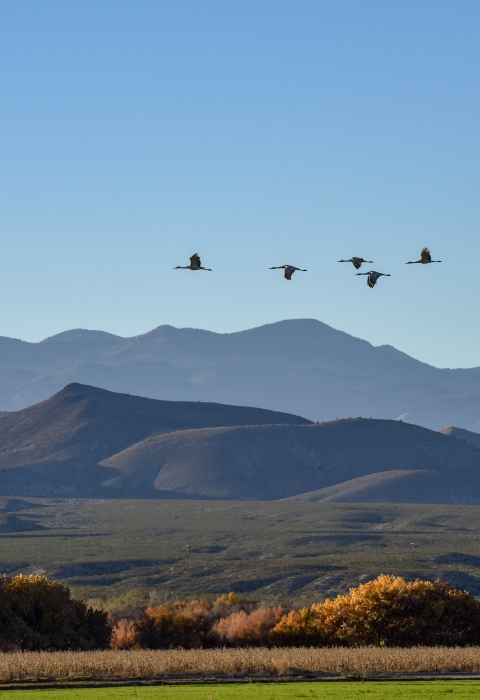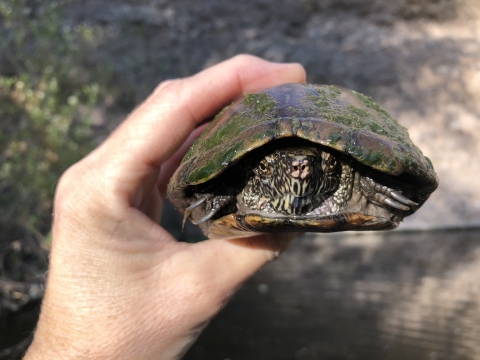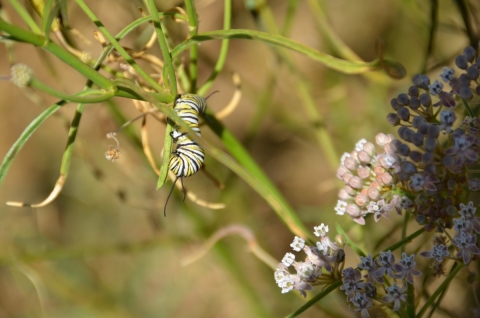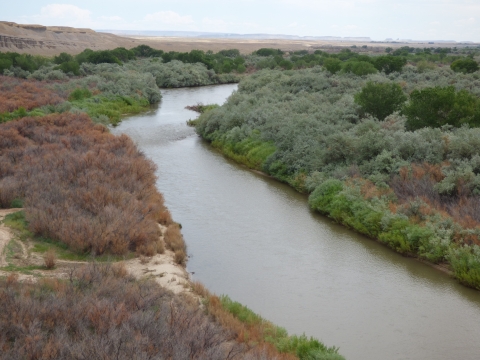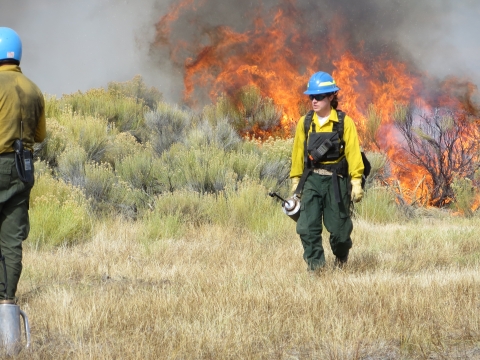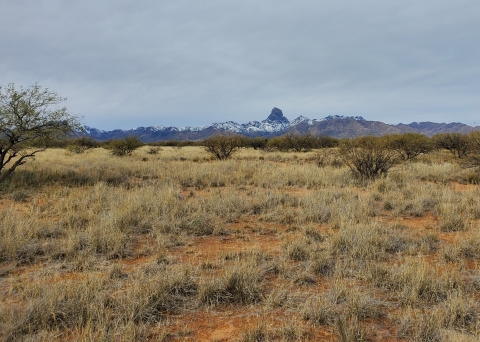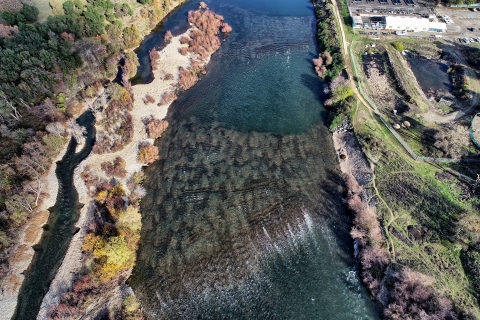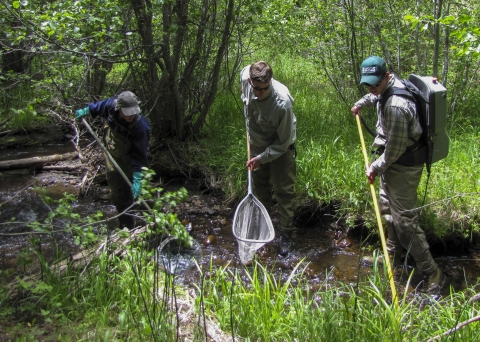What We Do
CART supports knowledge sharing, co-develops tools, and supports collaborative action to improve management outcomes for the following priority issues:
At-Risk Species
Listing a plant or animal as federally protected under the Endangered Species Act (ESA) is proven to be successful in preventing extinction. However, this level of protection is America’s last line of defense. There are tremendous opportunities for voluntary conservation actions to be taken before a species may warrant listing and protections under the ESA. Voluntary actions can improve conditions for species and improve habitats for at-risk, listed, and common species alike. At-risk species conservation is the Service’s initiative promoting proactive conservation of fish, wildlife, and plants with partners before the species warrant protections under the ESA.
In support of At-Risk Species Programs across the U.S. Fish and Wildlife Service, CART coordinates an At-Risk Species Community of Practice (CoP). This CoP serves as an information sharing and networking platform where individuals throughout the U.S. Fish and Wildlife Service can learn from each other about at-risk species conservation tools and successful projects. The At-Risk Species CoP:
- Facilitates sharing of transferable lessons learned by hosting workshops, webinars, and field visits and produce Case Studies related to at-risk species conservation and research
- Co-develops decision support tools and products to assist land managers and conservation practitioners in at-risk species conservation
- Increases communication and coordination between researchers and natural resource managers to leverage collective expertise and improve strategies for at-risk species conservation
Knowledge Sharing
- Explore At-Risk Species Case Studies
- Contact Karlee Jewell at karlee_jewell@fws.gov to view webinars recordings
Collaborative Action
- Contact Karlee Jewell at karlee_jewell@fws.gov to join the Community of Practice or for more information.
Nature-Based Solutions
Nature-based solutions are actions to protect, sustainably manage, and restore natural and modified ecosystems that address societal challenges, such as climate mitigation and adaptation, while simultaneously providing human well-being and biodiversity benefits (IUCN 2016). The U.S. Fish and Wildlife Service and partners have been using nature-based solutions in climate resiliency projects for a long time. Now, CART is helping the Service document these efforts, especially those on USFWS National Wildlife Refuge Lands.
Learn more about the U.S. Fish and Wildlife Service’s nature-based solutions efforts and the Department of the Interior’s Nature-Based Solutions Roadmap.
Knowledge Sharing
Drought Adaptation
Forecasts indicate that drought will impact Western landscapes and water supplies into the future, challenging agriculture, recreation, communities, and the environment. However, a history of drought across the region has led to remarkable demonstrations of adaptation and resilience.
The Drought Adaptation CoP is a central place to highlight these examples and learn from people preparing for, responding to, and recovering from drought. To support information-sharing on adaptation to drought, the Drought Adaptation CoP, in conjunction with the USDA Southwest Climate Hub and the Southwest Drought Learning Network:
- Developed syntheses on methods and adaptive science tools
- Develops Case Studies and hosts webinars
- Convenes regularly to increase communication among partners, identify research needs, and support implementation of relevant strategies
- Consolidates information in an easily accessible location
Knowledge Sharing
- Explore Drought Adaptation Case Studies
- Contact Jackelyn Alessi at jalessi@nmsu.edu to view webinar recordings
Tool Development
- Browse the Drought and Climate Adaptation Toolkit: This toolkit, developed with the Rio Grande-Río Bravo Collaborative Environmental Flows Group and the Southwest Drought Learning Network, summarizes information to help managers prepare for and respond to drought in arid river basins of the Western U.S. This toolkit delivers scientific information on proven and implemented methods and adaptive tools for responding to drought. Highlighted methods and tools have been developed collaboratively, put into practice across multiple basins, and holistically respond to complex socio-economic needs.
- Browse the Drought Adaptation to Sustain Tribal Trust Resources and Cultural Practices Toolkit: This toolkit shares information and tools with Tribal communities and non-Tribal resource managers to help manage water for Tribal Trust Resources and Cultural Practices before, during, and after drought.
Collaborative Action
- Contact Jackelyn Alessi at jalessi@nmsu.edu, Anna Weinberg at akweinberg@arizona.edu, or Genevieve Johnson gjohnson@usbr.gov for more information.
Fire and Climate Adaptation
CART has developed numerous Case Studies and hosted webinars on the topic of fire that showcase lessons learned from management experience and applied research. The lessons learned from these resources can help managers build upon previous successes and avoid potential pitfalls when managing fire adapted ecosystems.
CART is partnering with the Southwest Climate Adaptation Science Center’s (SW CASC) Southwest Fire and Climate Adaptation Partnership (SWFireCAP) to develop Case Studies and webinars that help advance fire and climate adaptation. Members of the SWFireCAP’s On-The-Ground Adaptation roundtable work with CART to develop Case Studies that highlight lessons learned from fire and climate adaptation projects implemented by practitioners across the Southwest.
Knowledge Sharing
- CART has developed numerous Case Studies on the topic of fire that showcase lessons learned from management experience and applied research.
- Explore Climate Change Adaptation Case Studies
Tool Development
- Explore Tools
- Browse the Connectivity and Climate Change Toolkit:The CART Team worked with the Association of Fish and Wildlife Agencies to create a living version of AFWA’s Connectivity and Climate Change Toolkit. The purpose of this toolkit is to provide fish and wildlife agencies with the information necessary to ensure climate considerations are being accounted for and incorporated in the planning and implementation of terrestrial and aquatic connectivity initiatives.
Grasslands
Grasslands in North America are typically working landscapes that sustain community livelihoods while simultaneously providing habitat for a wide range of species, from pollinators to pronghorn, and supporting vital ecosystem services like clean water and healthy soil. Unfortunately, grassland ecosystems face many challenges including degradation from unsustainable land use, loss to development and agricultural conversion, spread of woody plants and non-native species, and an increasingly arid and unpredictable climate.
Knowledge Sharing
- Explore Grassland Case Studies
- Contact Ariel Léger at arielleger@arizona.edu or Karlee Jewell at karlee_jewell@fws.gov to view webinar recordings
Tool Development
- Discover Decision-Support Tools: Use this searchable database, developed by CART and the Rangelands Partnership, to find relevant grassland related decision-support tools.
- Browse the Grasslands Toolkit: This toolkit summarizes information on the trends and challenges facing grassland ecosystems in semi-arid North America and presents management options to address them. The management options presented are based on Case Studies that showcase lessons learned from management experience and applied research.
Collaborative Action
- Contact Ariel Léger at arielleger@arizona.edu or Karlee Jewell at karlee_jewell@fws.gov for more information.
Aquatic Restoration
Billions of dollars have been spent on efforts across the United States to restore fish and wildlife habitat that depends on our nation’s aquatic resources. However, aquatic ecosystems are especially vulnerable to climate change climate change
Climate change includes both global warming driven by human-induced emissions of greenhouse gases and the resulting large-scale shifts in weather patterns. Though there have been previous periods of climatic change, since the mid-20th century humans have had an unprecedented impact on Earth's climate system and caused change on a global scale.
Learn more about climate change due to previous alterations and the dependence on sufficient water. These dynamics are further complicated by drought, specifically the recent historical drought in the southwestern U.S. Restoring aquatic ecosystems may mitigate the impacts of climate change, but resource managers must find ways to incorporate climate information into restoration planning and decision making. The Aquatic Restoration CoP:
- Delivers scientific information on proven and implemented methods and tools for aquatic restoration in the western U.S and advances the knowledge of how practitioners can adapt to climate change
- Increases the accessibility of information that is not otherwise readily available to water management agencies
- Develops Case Studies and tools to help practitioners prepare for future climate-adaptive actions
Bureau of Reclamation Initiatives
- Aquatic Ecosystem Restoration Program
- Environmental Water Resources Projects
- Cooperative Watershed Management Program
- Gila River Basin Native Fishes Conservation Program
- Lower Colorado River Multi-Species Conservation Program
- Trinity River Restoration Program
- San Joaquin River Restoration Program
- Glen Canyon Dam Adaptive Management Program
- Federal Columbia River Power System Tributary Habitat Program
- Middle Rio Grande Endangered Species Collaborative Program
- Platte River Recovery Implementation Program
Knowledge Sharing
- Explore Aquatic Restoration Case Studies
- Contact Anna Weinberg at akweinberg@arizona.edu to view webinar recordings
Collaborative Action
- Contact Anna Weinberg at akweinberg@arizona.edu for more information.
Non-Native Aquatic Species
Introduced non-native aquatic species can present obstacles to achieving management objectives, ranging from recovery of native aquatic species to maintenance of water delivery infrastructure. The CART Team initiated non-native aquatic species work through development of Case Studies starting in late 2019, and the CoP officially launched in May 2020. The Non-Native Aquatic Species CoP:
- Facilitates sharing of lessons learned through development of Case Studies, coordination of workshops, and hosting of webinar discussions on non-native aquatic species control projects and research
- Develops guidance for planning and implementation of non-native aquatic species projects and programs
- Fosters multi-jurisdictional coordination across geographies and organizations
Knowledge Sharing
- Explore Non-Native Aquatic Species Case Studies
- Contact Karlee Jewell at karlee_jewell@fws.gov to view webinars recordings
Tool Development
- Browse the Non-Native Aquatic Species Toolkit: This toolkit summarizes information on non-native aquatic species impacts and recommended control practices for key taxa in western North America. This toolkit presents Case Studies to inspire action and foster peer-to-peer knowledge sharing among experts and early career professionals alike.
Collaborative Action
- Contact Karlee Jewell at karlee_jewell@fws.gov to join the Community of Practice or for more information.
American Bullfrog Working Group
The American Bullfrog Working Group was developed to support landscape-scale conservation and recovery of listed and at-risk species by empowering agency managers to address American bullfrogs where they are a primary threat to achieving native species conservation and recovery goals.
